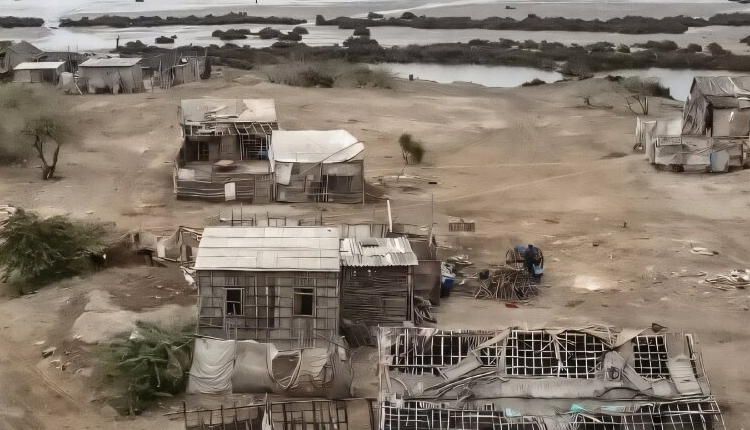New Delhi: In southern Pakistan, a terrible thing is happening: the Sindhu (Indus) Delta is disappearing fast. In just 20 years, rising seawater has swallowed about 40 villages, forcing around 1.2 million people to leave their homes. The disappearance of a centuries-old culture reliant on farming and fishing is striking.
The Sindhu Delta, where the Indus River meets the Arabian Sea in Sindh province, used to be a great place. People there made a living by farming, catching shrimp, and protecting mangrove trees. But now, the seawater is taking over, leaving salt-covered ground and empty fields.
Take the town of Kharo Chan, for example. A local, Habibullah Khatti, went back to his old village, Mirbahar, to say goodbye to his mother’s grave. The village is now under a thick layer of salt, showing how the sea keeps pushing in. Khatti’s story is just one of many. Thousands have moved to Karachi to find a safe place to live and work, making the city even more crowded.
Census numbers indicate that Kharo Chan’s population has dropped from about 26,000 in 1981 to only 11,000 in 2023. A report from the Jinnah Institute says over 1.2 million people have left the delta in the past 20 years.
What’s causing all this? The amount of fresh water flowing into the delta has gone down by 80% since the 1950s. A study in 2018 said this is because of irrigation canals, dams, and climate change affecting glaciers and snow in the upper Indus area. With less fresh water, seawater is moving further inland, making the soil saltier by almost 70% since the 1990s. This means farming is no longer possible, and the shrimp and crab populations, which used to be plentiful, have crashed.
To make things worse, India recently stopped following the Indus Waters Treaty after a terrorist attack in Kashmir. This treaty is important because it controls how India and Pakistan share the water from the Indus River. It’s been a lifeline for Pakistan’s farming and rural areas. Stopping it makes the water shortage even worse, harming the delta even more.
The Sindhu River starts in Tibet and flows through Kashmir before reaching Pakistan. It provides water for about 80% of Pakistan’s farmland and supports millions of people. The delta, made up of rich soil from the river, used to be ideal for farming, fishing, mangroves, and wildlife. Now, it’s a clear sign of the environmental and political problems in the area.
Those forced to leave face an uncertain future as the sea continues to engulf land and people’s livelihoods. The sad situation in the Sindhu Delta highlights the urgent need to focus on managing water better, dealing with climate change, and working together across borders to save what’s left of this important place and the people who depend on it.



Comments are closed.